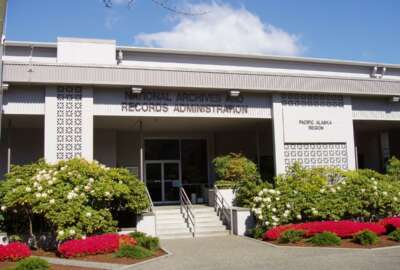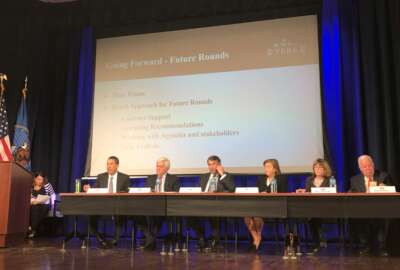First Look
Senators introduce bill to incentivize agencies to lease space they don’t need
The Saving Money and Accelerating Repairs Through (SMART) Leasing Act would allow agencies to sublease underutilized real estate to “any person or entity at fair...
A bipartisan group of members from the Senate Homeland Security and Governmental Affairs Committee is introducing a bill to incentivize agencies to lease space they don’t need.
The Saving Money and Accelerating Repairs Through (SMART) Leasing Act would create a pilot program that would allow agencies to sublease underutilized real estate to “any person or entity at fair market value,” including another federal, state, or local government agency.
The bill allows agencies to use rent payments to help fund capital projects and facilities maintenance.
Committee Chairman Gary Peters (D-Mich.) and members James Lankford (R-Okla.), Kyrsten Sinema (D-Ariz.) and Josh Hawley (R-Mo.) introduced the bill Thursday.
The legislation would give agencies more options to deal with underutilized space across more than 130,000 civilian federal buildings in the United States.
The SMART Leasing Act would require the General Services Administration to certify that subleases conducted through the pilot would not have any negative impact on the mission of agencies leasing the space, and that the terms of the sublease protect the interests of the country.
The pilot outlined in the bill would cap the number of agency subleases to six per year, and would run through 2024. At that point, GSA would advise Congress on whether to extend or expand the program.
Senators modeled the bill after a similar program used by NASA, which has generated millions of dollars in revenue for the agency to use on capital projects and facilities maintenance.
Peters said in a statement that the bill, if passed, would help public and private organizations make the best use of underutilized property, while also giving agencies a source of revenue to improve their facilities.
“Properties that federal agencies need, but are underused, present an opportunity for our government to generate revenue that can fund important projects, save taxpayer dollars, and root out waste,” Peters said.
The Office of Management and Budget released a National Strategy for the Efficient Use of Real Property in 2015, and multiple administrations have made shrinking the federal government’s real estate footprint a priority.
Agencies wouldn’t use the SMART Leasing Act pilot to sublease excess properties. GSA oversees its own process for the sale and disposal of excess federal property, which Congress sought to streamline in 2016 when it passed the Federal Assets Sale Transfer Act (FASTA).
FASTA also created the Public Buildings Reform Board (PBRB), which identified 12 high-value federal properties it recommended for public sale. The board estimated the properties would bring in approximately $500-750 million in revenue.
A federal lawsuit led by Washington’s attorney general, however, challenged the board’s recommendation to sell one of the properties, the Federal Archives and Records Center in Seattle.
The lawsuit argued that the center’s sale would jeopardize access to tribal and treaty records from the Bureau of Indian Affairs. OMB pulled its approval to sell the building in April, arguing that the plans ran “contrary to this administration’s tribal-consultation policy.”
GSA is still selling the other properties recommended by the board. The board is also expected to issue its second round of federal buildings it recommends selling in December.
Copyright © 2025 Federal News Network. All rights reserved. This website is not intended for users located within the European Economic Area.
Jory Heckman is a reporter at Federal News Network covering U.S. Postal Service, IRS, big data and technology issues.
Follow @jheckmanWFED






